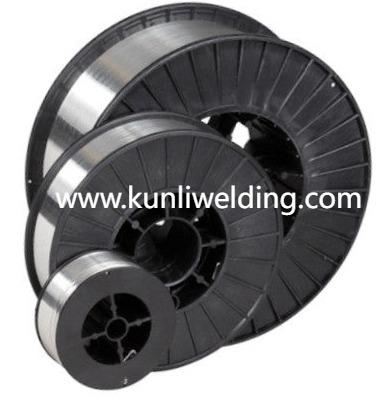Why Do Manufacturers Often Choose ER5356 For Automotive Frame Welds

When lightweight design and reliable joining intersect in mobility projects, Aluminum Welding Wire ER5356 often becomes the filler of choice for bicycle and automotive frames. Engineers and fabricators appreciate how this filler supports a balance of mechanical properties and surface behavior that matters when parts must withstand road stress and assembly cycles without adding unnecessary mass.
One reason ER5356 attracts attention is its weldability under common joining techniques used for frame assemblies. The filler forms deposits that flow readily into fillet and butt joints when operators manage heat input and travel speed. That predictable puddle behavior matters when manual welds and automated stations work side by side on a production line. Consistency across shifts and equipment reduces the number of trial iterations and keeps assembly throughput moving.
Ductility and joint toughness are central to frame performance. Bicycle and vehicle frames face repeated loads that produce local flexing and occasional impacts. A filler whose deposit tolerates deformation without brittle fracture helps the welded joint absorb strain rather than initiate cracks. In practical terms this reduces in service repairs and supports the durability expectations of riders and drivers who expose frames to varied road conditions.
Fatigue life is a frequent concern in these applications. Weld toes and transitions that concentrate stress can shorten life under repeated loading. When ER5356 is matched to appropriate process settings and joint fit up, the resulting bead profile is often smooth and uniform. That geometry lowers the chance of stress risers at the weld toe and contributes to longer intervals between inspections and maintenance interventions.
Appearance and finishing play a role for visible components. Many frame applications receive protective coatings or surface treatments that must adhere consistently across base metal and weld deposit. The filler s chemical behavior and how the deposit wets the parent metal influence whether a treatment colors and protects the joint uniformly. Seamless finishing reduces the need for aggressive blending and preserves the intended aesthetic of high value mobility products.
Feedability and handling are everyday shop concerns. Wire that feeds reliably through equipment and into the torch minimizes interruptions such as burnback or bird nesting. Consistent spool geometry and controlled temper from the supplier help maintain steady feed in both handheld and mechanized processes. Reduced stoppages mean operators spend more time adding value and less time correcting feed related issues.
Supplier collaboration shortens qualification cycles. When manufacturers provide handling guidance, suggested process windows, and representatives who will support trial runs, teams move from prototype to production with fewer setbacks. Clear spool labeling and batch traceability assist quality teams when audits or field issues require rapid correlation between weld behavior and material lot history.
Sustainability and life cycle considerations are increasingly relevant. Fabricators and brands that prioritize lower material use and longer service life benefit when filler choices contribute to repairable and recyclable assemblies. A filler that supports durable joints and that integrates with finishing workflows aligns with broader product stewardship goals without complicating fabrication.
Practical steps for teams considering ER5356 for frame work include running representative weld coupons that mirror joint geometry and loading conditions, documenting the process parameters that produce acceptable bead form, and checking finishing outcomes on treated samples. Operator training on travel rhythm and torch angle reduces variation and helps transfer successful trial settings into series production.
For procurement and engineering teams evaluating suppliers, emphasize manufacturing controls that impact feed and deposit behavior including drawing tolerances surface finishing and spool packing. Request sample spools and handling notes to verify feedability in your exact equipment and to ensure finishing matches your visual requirements. When supplier documentation and shop trials align, qualification becomes a matter of confirmation rather than lengthy iteration. To review product information and access supplier technical materials for ER5356 and related aluminum welding wire options visit www.kunliwelding.com .
- Art
- Causes
- Crafts
- Dance
- Drinks
- Film
- Fitness
- Food
- Jeux
- Gardening
- Health
- Domicile
- Literature
- Music
- Networking
- Autre
- Party
- Religion
- Shopping
- Sports
- Theater
- Wellness



